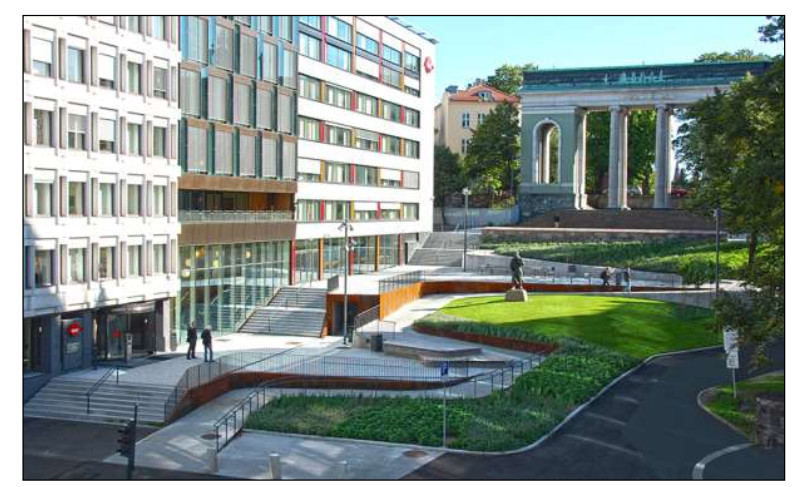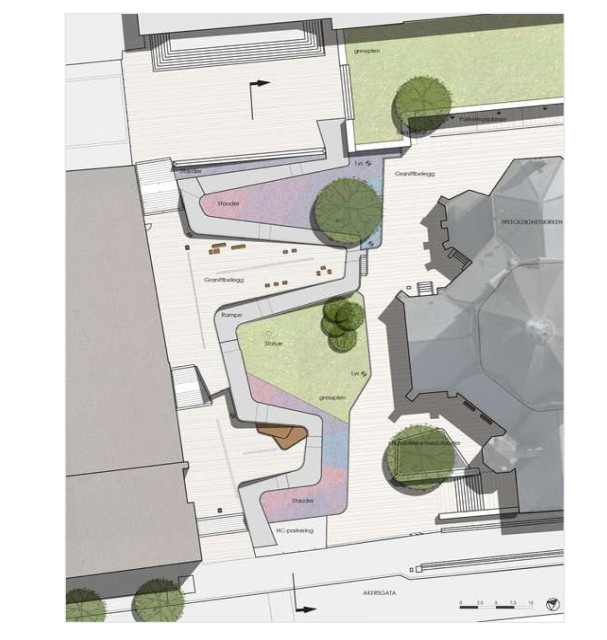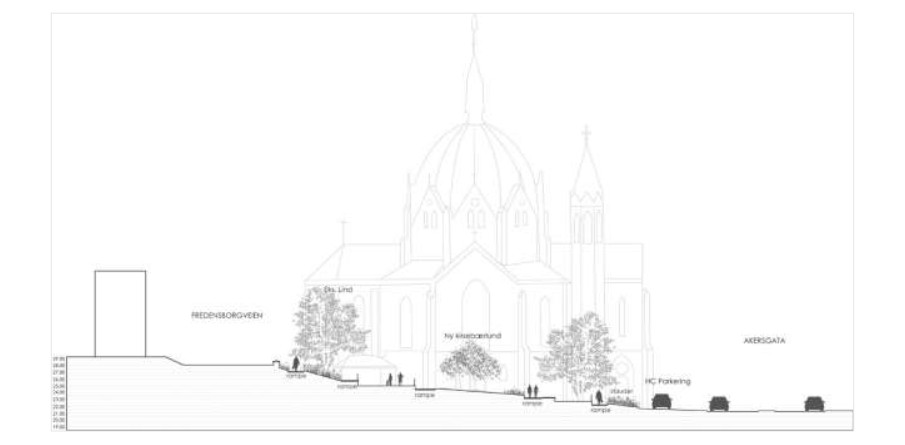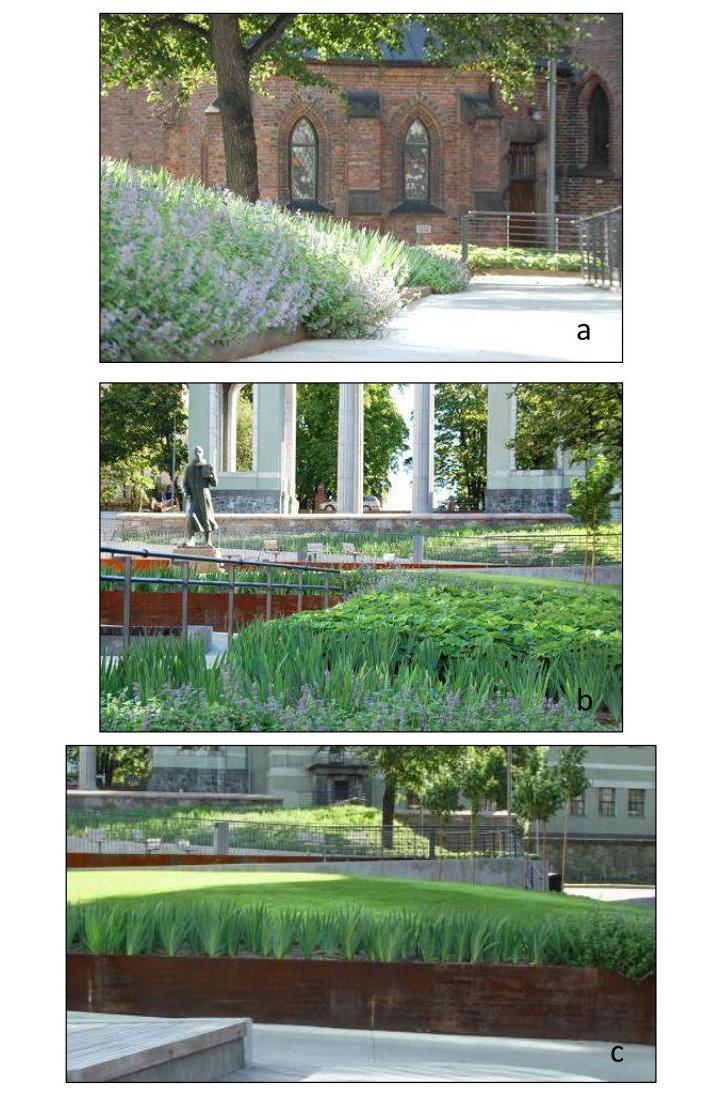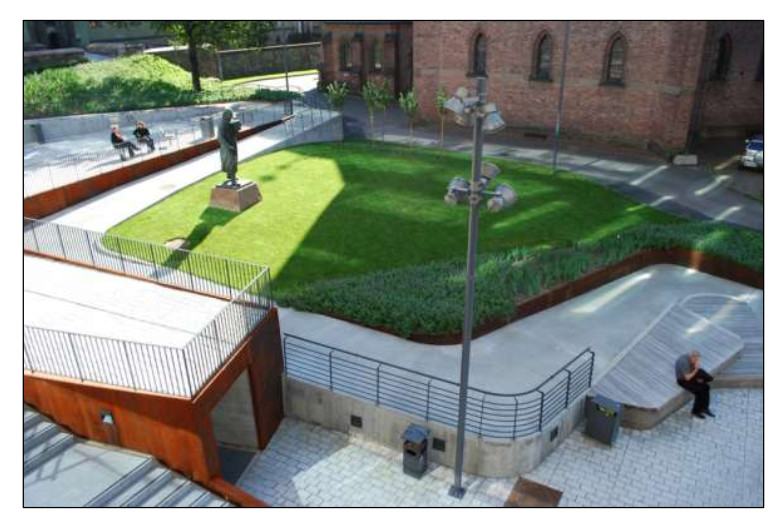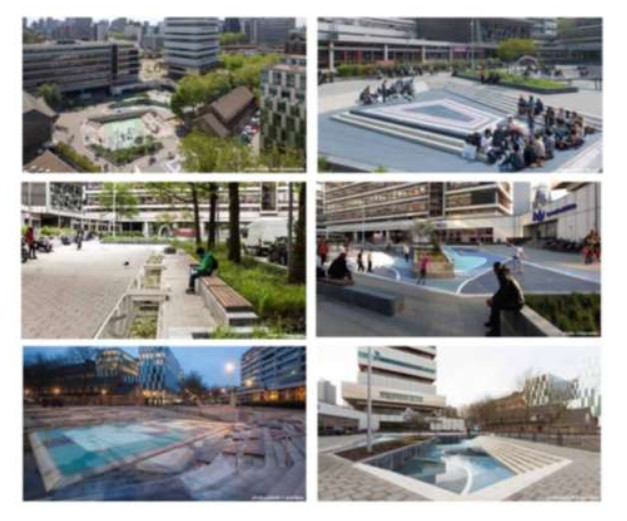1.
Introduction
The ongoing debate over sustainable management of space and environmental resources is most appropriately interpreted in the context of a wide-ranging and diversified body of knowledge, where different concepts and issues related to protection and control of the effects of the emergency generated by climate change in an urban setting take on ever-growing importance in decision-making based on planning, governance and valorization processes on environmental resources and urban spaces, underscored by themes including resilience and anti-fragility. These attributes are the basis for an analysis and identification of solutions for intervening (or not) in the anthropic space of the city.
Nowadays, the organic design of the urban texture, under stress from growing anthropic pressure and its continuous evolution, is fragmented by structures, contexts, users and non-homogenous demands that have a disorganized morpho-functional pattern and inefficient fruition and management. This causes a profound disconnection of urban spaces from the different scales of analysis and planning.
The complexity of city structure comes out to be not-homogenous with disorganized tracts, confused and at times unable to use its own natural, semi-natural and anthropic components to activate and adequately pursue the objectives of quantitative and qualitative sustainable fruition of the various places, at the same time generating functional distortion and environmental impacts at a local level.
For this reason the planning decisions concerning the quantitative use of space clash with the need to recover and add value to the elements used to evaluate the quality of life in an urban context. The urban environment is in constant and rapid transformation, and it tends to forget the role and value of the multiple elements it is made up of. These elements are necessary for the construction, perception and fruition of its landscape, of its distinctive and defining elements, a complex combination of the many characters it is composed of, rich with resources, forms, depths and methods of use in an extremely variable dimension in space and time.
As a result, this deep fracture in the urban system provokes a series of negative effects, including: interruption of the functions of ecological and natural networks, inefficient fruition of space by man, scarce promotion of contexts, entropy, reduction of capillary mobility and management of flows, state of abandonment and environmental degradation leading to a marked reduction in the quality of life in an urban environment, reduced perception of the landscape quality, deviation of socialization practices and participation in the management of local territory by community residents, social exclusion, and tension and conflict in terms of environmental compatibility.
Based on these thoughts, the aim of our research is that to reconsider the methods of analysis and planning in the urban context, as a preferential space for sustainable and resilient anthropic action. This profound action combines the mainly physical aspect of planning, at the various scales, with the recovery of the identity and role of the urban spaces and their different applies, in a new environmental resources' sustainable use and management dimension.
This work intends to affirm the active role of accessibility as a prerequisite for intervention, as an analysis of feasibility to improve the approach to the idea of anthropic space and its various destinations of use, to activate an integrated system of widespread and environmentally sustainable mobility services. This is combined with the proposal to consider the use of natural open urban areas as the matrix of the project, integrating and completing the goals of inclusion and accessibility, to cope with requests to protect and promote environmental resources in relation to the city.
This idea is supported by the experience of a certain case study that considers universal design application positive effects on resilient open space plan strategy in Oslo, together with an example of an active use of water to plan a sustainable public space in Rotterdam using the water squares.
2.
Universal design as part of space components' relationship with anthropic features
The space to be inhabited defines the complexity of relations in human space in its various modalities of perception, transformation and use; the structure of the place is described in terms of "landscape" and "settlement", and analyzed through the categories of "space" and "character". The two psychological functions implicit in inhabiting a space therefore become "orientation" and "identification". While the space indicates the three-dimensional organization of the elements that make up the place, the "character" denotes the general "atmosphere", which represents the most comprehensive property of any place. This is summarized in the concept of "lived space", meant as knowledge, rediscovery of its earliest meaning and potential, either spontaneously or through the action of man.
Starting from this viewpoint, it is necessary to take into consideration the following approaches: placing the final user as a resource for planning; promoting cultural context and identity; seeking participation in planning; expressing symbolic meaning; creating the conditions for accessibility, advancing differences, studying complexities and analyzing the context(s). In real experience, the definition of accessibility is often taken for granted, or is explicitly connected only to practical rules set forth in regulations.
By contrast, accessibility is a sensitive attribute linked to the relations among different components of the constructed space and the characteristics of the person/user. This attribute is constantly adapted based on the foundational objectives of the project, with a perspective that encompasses a holistic approach to the destination of use of urban space and its resources, at the center of which lies the goal of combining the project with the perspective of the user in terms of efficiency and effectiveness of the access to the spaces, availability and complete, symmetrical circulation of information.
Specifically, we refer to: regulatory accessibility and real accessibility; degrees of accessibility linked to the characteristics of the context(s); accessibility criteria based on: distance, communication (information, legibility, contents, location, lighting, visibility, usability, safety), relation with the city (guaranteed connections), pathways (possible access to a place, an asset, a service; usability of the architectural scale), all items that respond to the fundamental principles set forth in the Universal Design developed by The Center for Universal Design, North Carolina State University in 1997 and related to: Equitable Use; Flexibility in Use; Simple and Intuitive Use; Perceptible Information; Tolerance for Error; Low Physical Effort; Size and Space for Approach and Use.
The concept of accessibility, both in general terms and in relation to the constructed environment – that being the specific topic of this study – is increasingly used and has become commonplace in ordinary language. It is widely used in regulatory and technical texts, substituting the notion of an architectural barrier, which still conveys to those unfamiliar with this field the problem of use and fruition of spaces and services to people with disabilities. To correctly address the issue of its definition, the concept of accessibility cannot be explained without having first delineated an ethical frame of reference. From this standpoint, the foundation is constituted by the 2006 United Nations Convention on the Rights of Persons with Disabilities, endorsed by Italy with Law no. 18, dated 3 March 2009. The importance of the text lies not only in its direct reference to the conditions of persons with disabilities, but above all in the fact that it defined accessibility as a principle in non-discrimination.
Inaccessibility of spaces, technologies and information is a cause for marginalization and exclusion for people with disabilities, but potentially also for other categories of subjects, who for various reasons and conditions can find themselves in situations where it is objectively/subjectively impossible to overcome barriers. These issues are referred to in the preface of the text very clearly. The Convention acknowledges "... the importance of accessibility to the physical, social, economic and cultural environment, to health and education and to information and communication, in enabling persons with disabilities to fully enjoy all human rights and fundamental freedoms...". Another basic reference regards the definition of Universal Design: "...Universal Design is intended as the design of products, structures, programs and services to be usable by all people, to the greatest extent possible, without the need for adaptation or specialized design...".
Urban spaces and resident communities have serious accessibility issues, and just as often the indicated solutions are designed according to a stereotyped conception for limited niches of potential users, with particular reference to mobility disabilities (It remains emblematic that the dominant signage in urban spaces and buildings to mark attention to accessibility is still the image of a person in a wheelchair. Elevators, bathrooms, parking lots, just to cite the most common areas in usual planning, are interpreted as accessible in the measure in which they can respond to the needs of people who use a wheelchair.). Nevertheless, the definitive or temporary inability and/or impossibility of a subject to efficiently and effectively use spaces and services encompasses a much wider and diversified group of people, also fragile categories, for example children and the elderly.
In light of the ethical references cited in the UN Convention [1], the most convincing definition of the concept of accessibility is that of Iwarsson and Stahl, based on the concept of the relation between the person and the environment [2].
"… Accessibility is a relative concept, implying that accessibility problems should be expressed as a person-environment relationship. In other words, accessibility is the encounter between the person's or group's functional capacity and the design and demands of the physical environment. Accessibility refers to compliance with official norms and standards, thus being mainly objective in nature. Whenever using the concept of accessibility, statements must be based upon valid and reliable information gathered in three steps: 1. The personal component (description of functional capacity in the individual or group at target, based on knowledge of human functioning); 2. The environmental component (description of barriers in the environment at target, in relation to the norms and standards available); 3. An analysis juxtaposing the personal component and the environmental component (description of accessibility problems) …".
The relation between person and environment is evident at the moment that the person, with their characteristics and possibilities, "encounters" and often "conflicts with" the requirements and limitations of the environment. The dynamics between person and environment therefore generates a concrete problem of accessibility to the space(s). Therefore, accessibility is not only an attribute of the environment and not only a problem relative to "possibility/ability" of the person.
The definition by Iwarsson and Stahl recalls the objective nature of the problem: the measurability of accessibility. It is not a mere fact of imagining an environment perceived subjectively; the person is to be seen in the perspective of their "functional" profile, which translated into the language used in the International Classification of Functioning, Disability and Health (ICF), can be better defined based on the notion of bodily function and structure (see ICF scientific diagram, Figure 1).
The environment facing the person reminds of measurable attributes and characteristics, which presumably have the effect of hindering accessibility. This is an open definition that requires a thorough assessment of the functions and structures of the body, including mental and intellectual/cognitive aspects. Accessibility cannot be assessed without considering it in relation to the characteristics of the person. For example, good accessibility must guarantee access to the spaces and services in a simple, independent manner.
Western culture has given preference to the notion of independence up to the point of attributing it with an absolute value, especially in the modern day. Despite this, independence cannot and must not be confused with a final objective, but must be considered as a means for better reaching personal opportunities and objectives (or "capabilities") within a context of complex relations with people, which remains the point of reference for the daily life of each individual.
This concept lends value to the postulate of the Convention, according to which accessibility is a determining factor in non-discrimination, as it guarantees fruition and the possibility of fully implementing the rights of the individual in society.
It is not a given that an environment is suitable for everyone or accessible to everyone, because no one can guarantee that this goal is possible to conceive of or realise. In this sense, accessibility is an open dimension. The law established some characteristics and assumed a fundamental role for public and private subjects. On its own, the desire for accessibility and subsequent planning of the space must exceed standards and regulations, through planning founded on the principles of Universal Design.
Accessibility establishes planning quality: it is impossible to implement the principles of universal design in a mechanical and functional way. The contribution of aesthetics, a fundamental dimension, must also be considered because beauty is an innate need for all people. With regard to this, placing the question of beauty into this equation creates another aspect. During the 1900s – actually probably in the 1800s, the era when the health standards still enacted today were formulated and developed, including assisted residential facilities and institutes – the design culture was directed towards the needs of fragile and disabled subjects, thus generating a health-related form of aesthetics, where the spaces and buildings, furnishings and complementary details had to be different from those made for "standard" people and dictated by health standards [4].
The pursuit of beauty and accessibility should follow a parallel, shared path. Beautiful spaces and things, in addition to being accessible, are the solution that is "best for everyone", underlining also through the architectural language that the pursuit of beauty goes beyond function and destination of use, overcoming discrimination right from the design stage. In this sense, the city can be considered a work of art if it displays its aesthetic dimension, which is inevitably intrinsic to all of its forms of expression. Supporting the idea that beauty should not only be an ideal concept, but instead a practice, implies a clear rethinking of the profile of a city and its development in space.
Discussions on the definition of accessibility highlight that it is not an issue of lacking respect for pertinent laws and regulations, but instead is a theme that must be expanded as far as possible, part of the more general framework of design quality, involving a variety of urban spaces: homes, gardens, public and private buildings, services and technologies.
With regard to this, the preambles and art. 2 of the UN Convention, dedicated to definitions, specify that Universal Design is a tool for rendering constructed space more accessible, attributing a level of importance to design that goes beyond regulatory limitations and rules, nevertheless not excluding their value, since these are obligatory.
But the explicit reference in the UN Convention to Universal Design, characterised by accessibility and usability conditions for all people, has a very dense meaning, because it implements a design model that can no longer be based on the anthropological model of the Vitruvian Man: perfect, abstract and far from reality.
This produced the culture of the "minimum standard", translating into spaces that cannot be used by people with disabilities, which in general do not conform with the needs of the majority of all people.
On the other hand, the Universal Design suggests a pursuit of the "best possible solution(s)" that may respond to most categories of users. This implies a change in perspective in design culture, because it spurs a step from a self-referenced dimension –a type of design that is not attentive to final users, but instead an expression of the designer's sterile personalism, an aphasic design that produces an architecture that does not communicate meaning to the user – towards an externally-referenced design, centred on the needs of the person and enhanced with the components of needs and requirements, able to produce an eloquent type of architecture that communicates recognisable and shared meaning through concrete roots in the context where it is created.
Accessibility therefore is defined as a form of knowledge in design, focused on the individual to respond to their specific usage needs. The resulting architecture presumes a design-oriented thought and action, which moves from the behaviour of users to seek solutions that can prevent discrimination and/or exclusion. These elements, if interpreted in their constructive sense of equality and inclusion, improve the actual and perceived quality of the space with positive, wide-ranging impacts, rendering this architecture the true representation of the society that produced it.
Therefore, inhabiting the space becomes the authentic dimension of anthropic living, where the user finds optimum living conditions and consistent management of the local territory in the medium and long term. This refers to the domestic dimension, to the public space and its relations, to connections generated in the urban texture, which order and direct pathways for fruition of the dense space of the city also from a visual standpoint.
It is in these dynamic dimensions that the very essence of man existing in space becomes apparent, inhabiting the space "to be"; "being in the world"; recognising his role as an active component in the construction and productive use of space, perceiving his own territorial identity, understanding its value, holding its memory, feeling a sense of belonging and safety given by the deep knowledge of the space of daily life [5].
3.
Materials and methods: Schandorff Square in Oslo
The discussion about the re-composition of the urban panorama places architecture in relation to the action of movement, a system of dynamic relations among different spaces in the continuous search for meaning and temporal definition, which constitutes an active method of perception, comprehension and knowledge of the context of the city space. In this sense, movement within the city becomes not only so much a necessity, but an opportunity.
The fragmentation of the urban design is recomposed through the use of accessible planning, which combines the various needs of the users with improvement in the quality of the urban environment. Thus, it becomes a tool that can activate and promote the external positive environmental features to reduce, manage and control the impact, establishing new pathways for moving and living among the different components of the area, creating new scenarios for urban regeneration, relations and resilience between open spaces, in a widespread, inclusive and sustainable way.
Reading to usability on an urban scale, the concept of accessibility has implications that have found adequate expression in the Schandorff Square planning in Oslo, Norway, made by the architects Østengen & Bergo AS [6]
This was an urban renewal project on a public space measuring 2500m2 created in 2009. The design is based on application of universal design criteria, a design model that starts from the needs of people and establishes performance criteria to meet them. This method influences the spatial quality and impacts the fruition of all categories of subjects and potential users.
The result of the intervention highlights an approach to design that produces a marked increase in the quality of the space, as it is not limited to the mere abatement of architectural barriers, but instead reconfigures the framework of the anthropic action through a logic of accessibility permeating the composition (Figure 2).
The result is a solution that implements a profound reformulation of function and dimensions of space, based on the awareness of having transformed limitations into resources for man's own benefit. It is a landscape project aimed at restoring collective use in an anthropic context, uniting specific urban renewal elements with re-naturalisation and ecological goals.
The square, located in the city centre, is the evolution of a dead-end street, Schandorff, from which the project takes its name, converted by transforming car parking to an urban natural park space. The square is enclosed by large Oslo buildings: the Trinity Church to the south, a centrally-planned Gothic church with brick facades, the Deichman Library to the east, featuring an imposing row of columns forming the entrance to one side of the square and the home for the ancient sculpture of the Apostle of Greenland, Hans Egede, now enjoying a new enhanced space, in contrast to the previous parking area that overcame the sculpture. The street that comes down Keysersgate opens up a panoramic view to the west.
This project helped to mend the urban construction, managing to reunite the dispersion previously caused by intermittent spaces with impoverished functions, like parking areas, which prevented the possibility to take proper advantage of the space and the surrounding architecture.
The ramp that joins the two opposing urban centres became a compositional hinge-point for the renovated space, unwinding without architectural barriers and enhanced by the axial staircase that connects a residential area of the city to the public library. The ramp becomes an architectural element that generates space articulating into a pathway (Figure 3), an especially significant theme because it carries with it fundamental archetypical values ("…the axis is perhaps the first human manifestation; it is the means of every human act. The toddling child moves along an axis, the man striving in the tempest of life traces for himself an axis. The axis is a line of direction leading to an end. In architecture, you must have a destination for your axis...") [7]
The natural inclination of the area became a design tool, adding value to the pedestrian area and favouring relations, the act of being and moving in space(Overcoming the 7-meter sloping inclination between the two streets generated a solution composed of a connecting curved walkway with a maximum inclination of 6.5%, with insertion of evenly-distanced resting platforms. Along the ramp there are small squares and planted areas that meet one another and alternate in a mesh pattern.) (Figure 4).
In this project the pedestrian area, the quintessential area for a meeting space, is characterised by urban accessibility. Thus, not only does it permit reaching a specific destination, it also suggests a reinterpretation that, in addition to usability, also promotes perception of the space and contributes to rearranging the various parts of the city into a single narrative sequence. This guarantees strong recognition and correct contextualisation of the architectural monuments, which thus communicate the identity of the city.
Use of the square is expanded thanks to small gathering areas for socialisation and resting, which open up along the pathway, arranged among the well-kept garden areas, which feature large planted spaces with various flowers and large trees that provide shade alternating with open lawns (Figure 5 a.b.c).
Spaces are furnished with differentiated seating, which creates an interesting feature in terms of accessibility and development of the relational sphere; these seats are many and close together, with benches and revolving chairs with adjustable heights to favour conversation, also fitted with armrests to allow independent movement and seating.
Even the simple path across the square is designed for various categories of potential users, in particular those who may have difficulty managing the incline without resting, like the elderly: just like the seats, the sloping platforms that outline the paths and garden areas are designed for resting, being positioned at heights to serve as back supports.
The materials used are essential, in their resistance and ductility, as well as in their chromatic impact, with warm, pleasant tones. The pathway, with regard to its itinerary, surface and supporting walls, is built in poured concrete with rough surfaces to provide tactile signals for blind and sight-impaired persons. The small gathering areas are paved in light grey granite floors; the areas dedicated to gardens are supported by walls in Corten steel, enclosed by fences with vertical structures that guarantee safety for adults and children, arranged in a pattern to prevent climbing (Figure 6).
In its overall form, the path develops into a cross-over, letting people explore the city like a story. Accessibility plays a fundamental role, as it permits and generates an active appropriation and fruition of spaces, so that they can live up to their full potential, from the creation of opportunities for positive relationship networks, to the creation of a deep feeling of belonging to that place.
4.
Urban space plan: some methodological thoughts
4.1. Integrated design
The most direct and practical impact of all this surely falls on an integrated design approach, which unites the well-known issues of composition of space, of urban morphology and the shape of the city, of mobility, management of flows and designing roads and pathways, with the issues of water as an element directly connected to environmental sustainability in the dual dimensions of protection and promotion of resources.
Specifically, this refers to a design approach – at various levels, specific, local, but also territorial – that means to integrate the landscape with mobility and the water mains system, an approach that blends water management with urban planning through multidisciplinary methods, namely: control and management of rainwater in relation to the climate (e.g., in a rainy climate), landscape design principles (study of soil permeability and selection of plants to prevent climatic imbalance), road design criteria (management of different types of flows and multi-modality in relation to speed, geometries of nodes and the impact of flows on the environment, both urban and suburban) within a comprehensive layout, that is the design of public space with its various components.
This line of research, developed through various design experiments, bases its assumptions on four principles:
(1) Rethinking the urban project as an opportunity for a more sustainable water management plan by:
transferring rainwater to the aquifer (especially in the urban environment),
using differentiated dispensing systems (both urban and suburban),
calibrating the most adequate return time in the dimensioning of reservoirs and networks;
(2) Public space planning with more environmentally "convenient" management over time through:
separation of white water from black water from the collection point,
limitation of use of chemical and mechanical purification systems in favour of more "natural" systems,
water treatment systems for fresh rainwater,
physical decantation systems, also open air, for screening and storing bulk material in the first stage;
(3) Designing the public space based on hydro-geological safety for the territory (in both urban and suburban areas) through:
large underground accumulation basins (water squares) for early emergency response,
micro fly-wheel tanks throughout the territory to manage differentiated release over the medium term (both in public and private space),
management of waterproofing (use of draining, semi-draining or waterproof surfaces and compensation or hydraulic invariance systems);
(4) Transforming "water limitations and need" into themes for urban and landscaping planning through:
expansion tanks and lamination tanks vs. natural areas and parks,
underground basins and fly-wheel tanks vs. water squares and rain gardens,
banks, holding structures and dams vs. squares, bike paths and urban parks.
This approach provides an opportunity to redirect thinking around new forms of open space, starting from the design of the soil, in particular the types of pavement (waterproof, draining and semi-draining), on to the landscape (urban) and vegetation, considered not only as decoration or urban backdrop, but as a "collaborator" with the water project (e.g., rain garden or water squares) and the roadwork project (e.g., as barriers and vegetal filters to absorb traffic emissions), with inevitable consequences on "forms and ways of walking in the city" [8].
The projects developed in this study all revolve around an experimental dimension where new forms of water management through diversification of soil types are tested (to control speed and flow of water), together with use of specific plants for humid or aquatic habitats that can provide better water absorption (with subsequent atmospheric recovery), or mechanically managing rainwater flows, and use of semi-draining pavement to favour differed infiltration over time of rainwater, but with a visual pattern and appearance that integrate with the architectural structures in open public spaces. In short, the entire research study, through experimenting with different materials and functional elements (water and plants), concentrates on the construction of "resilient landscapes".
One of the first specific issues relates to the management of "superficial water" in garden areas and public spaces in the city as a fundamental theme for managing risk and prevention of "catastrophes". Improper water planning can have very serious consequences on the space and its inhabitants: saturation of water networks up to total blockage, flooding and infiltration, and even landslides and collapses.
4.2. Urban design and waterscape
Designing the necessary infrastructures for managing water-related risks follows a discipline founded on statistical determination of critical factors and events and a consolidated practice over time and through history in the territory, spanning farming practices (irrigation) to city defence systems, the need for urban water and sewage systems (collection and flow), and minimum conditions for survival (integrated water system). At times, these infrastructures do not relate to landscape planning practices, especially in the urban environment, since they are always considered "systems", which must collect water (drainage volumes), channel it or hold it (in urban mains networks), and then send it to the aquifer or to other bodies of water (rivers, lakes or sea).
The culture of water system planning often traverses an idea based on risk control, which translates into solutions for limiting danger. Therefore, often the result of vast renovations on water systems in the territory stems from a project that mainly responds to limitations, which are designed to "regularise" and control flooding and the destructive force of water. There was one specific moment in history when the largest landscape and territory projects, from Versailles to Schönbrunn, Caserta to Stupinigi, took advantage of or integrated the limitation of water risk as an opportunity for constructing new local frameworks and original landscape compositions in the geographic scale [9], formulating new inventions, devices and machines for managing water, which today are still a part of common culture for constructing open space areas, because they were then implemented inside the city, such as, for example, grand waterfront projects and riverbed parks in London, Paris and Vienna in the late 1800s, transforming dangerous areas first into work areas and then into areas for leisure activities.
Proper configuration of the landscaping layout, specifically riparian landscaping, in addition to favouring the natural functioning of the water cycle (photosynthesis and return to the atmosphere) and balancing climatic change, also contributes in a significant way to mechanically "retaining" water absorption, therefore providing a mechanism for managing rain events. Moreover, the environmental and natural roles of urban forests, in particular riparian forests, associated with humid lawns, constitute a fundamental element for the correct "systemic" functioning of natural corridors that ensure biodiversity within the city. This is the root of the central role of the water systems in the functional, structural, semantic, management and perceptive construction of open space, starting from the basic components that always have a dual purpose: expansion tanks, lamination basins and water treatment tubs, fly-wheel tanks, holding or overflow banks and barricades, dams, flooded humid fields, canals, and widespread networks. The "basic elements" of the water project become fundamental elements of the project for open space: foundational components for new landscapes, waterways, also spaces that can be used by people if designed for such, like squares, gardens, parks, public spaces, pedestrian paths, sports areas and playgrounds. A valid example of this kind of project is in the city of Rotterdam, Netherlands, reported in Figure 7.
The hypothesis at the base of the waterscape is management of mains water, in particular superficial water flows and drainage, used as the "foundational matrix" of the urban landscape, from which a new vocabulary takes shape, starting with indicators like "permeability", "return time", and the concept of "resilience", arriving at the dimensioning of compartments to derive the figures and forms of open spaces, from modelling of the soil, the arrangement and selection of plants, to the definition and organisation of the functions and fruition levels and accessibility times.
Conveying, retaining and then releasing water are therefore the principles used to redesign the urban landscape in an "apparently new" way: gardens, parks, planted areas, squares, parking lots and roads are designed to "collect and retain" significant amounts of water over the span of the year; they are public spaces, but also water system elements. Designed to sporadically absorb significant volumes of water (for example, transforming a square into a fly-wheel tank), in addition to normal operating values, to then release the water, requires significant flexibility in the space and in its function. This does not, however, compromise usability and accessibility. In short, it is a landscape designed specifically to modify its appearance according to the seasonal cycles (the waterscape paradigm). This mutability (another waterscape paradigm) implies significant impacts that must be foreseen and assessed right from the start, because the force of water, if not properly managed and controlled, can wipe the soil and plant life to zero. This cyclical nature is also the motor for environmental biodiversity. Mutability and cyclical nature are both waterscape paradigms.
5.
Discussion and results
As noted, the notion of accessibility can theoretically be considered as the result of 5 dimensions: a) the geographical-territorial dimension, considering the physical distance between user services/resources and the qualitative spatial characteristics of the activity; b) the economic dimension, for which accessibility is assessed in respect to the cost of the transfer; c) the engineering-infrastructural dimension, which considers the type of mobility, promoting transportation as the main criterion for accessibility; d) the temporal dimension, which defines time as a unit of measurement; e) the sociological-perceptive dimension, which relates accessibility to needs, focussing attention on the empathetic aspect instead of the functional aspect [11].
In particular, this latter dimension becomes relevant as in it accessibility is an attribute of individuals rather than of places, overcoming the limits of a perspective that is still too anchored to physical factors, and giving precedence to the relational aspects of the subjects.
The new complexity of forms of the contemporary city requires that accessibility accept and process different meanings and more articulated actions. The profound diversification in ways of using space means that accessibility arranges and directs contacts and the resulting social interactions. From this perspective, accessibility becomes the essence of the urban phenomenon, a principle that favours and interprets the growing lack of uniformity in languages and patterns of the urban texture ("... accessible is that place where each person feels comfortable. A place is accessible when it truly belongs to everyone, a non-discriminating place, non-selective, not alienating...") [12].
In the same way that the environment influences the behaviour of people, anthropic presence and action mark and change the urban environment in a relational pattern involving subjective and collective perception of space. This dynamic establishes an experiential relationship between the user and place, with movement at the centre, for the purpose of recovering its identifying dimension [13].
Mobility, movement within the framework of the city, remains the irrevocable requirement for efficient and effective access and use of places, property and services. "… With the diffused city, instability becomes the dominant character of the urban territory, and in the new contemporary landscape the infrastructures dominate without ever really connecting with it … the mobility of individuals seems to have taken away the genetic code of the city…" [14].
"… The inner transitory urban areas activate new functions, thus becoming strategically linked to and enveloped in the infrastructure, completing it but also acquiring an independent semantic value, designing public space, redefining the relationship between the natural and artificial landscapes. The shared open space therefore becomes a medium between the city and architecture, which tries to be the bearer of an alternative identity, 'a shared space for shared experiences'..." [15].
The methods and speed with which the city transforms in an effort to find an ever unstable balance between usability demands and sustainability of natural, semi-natural and anthropic resources that characterise it require re-thinking the design tools used for the construction of intervention elements that can combine the value of what already exists and the powerful force of what is new.
Mobility and public space become structural systems of the contemporary city; the quality of the urban environment is generated from their synergistic inter-relation, its morpho-functional identity combined with the design of the landscape, as a contribution to the realisation of scenarios in a medium- to long-term temporal dimension marked by resilience and inclusion.
It is this new perspective that influences the most intimate parts of the city, its mutable nature, a knowledgeable experience that is dynamically balanced between memory and experience, making the citizen able to simultaneously perceive their own individual identity and the collective dimension of the urban resident community to which they belong, with the primary objective remaining knowledge.
What emerges is a concrete image of the city, a place in the process of becoming, which possesses and processes the genetic traits of the human being in relation to the attributes of the space offered to him, using the alphabet of accessible design.
Affirming the role of Universal Design in the planning of open space means adopting the perspective of the user; it means abandoning the simplified design scheme based on the standard, categorising final users, where uniformity becomes the norm, disregarding the complexity of reality, the variety of differences, the characteristics of the context, not exalting creative potential.
This approach, which involves a holistic analysis, is made available thanks to accessibility, with the intent of solving the issue of urban planning. It suggests that we face complexity as an opportunity for expanding intervention solutions; that we consider the user as an active resource for design; that we promote the contextual and cultural/symbolic identity of a place; that we implement participatory and inclusive design to prevent forms of discrimination and marginalisation of individuals; that we realise products, environments and services that can be used by everyone, in the most expansive way possible, pursuing optimisation of conditions of availability and use, independently of the initial conditions of the potential user.
The projects developed as part of this waterscape study experimented with the impacts of form/water on new geometries of accessibility/usability of urban public space, starting from a study of habitats, their permeability, the structure of the spatial context and its elements and, in general, the capacity for resilience of the landscape in assessing the role of natural components.
In this sense, the water squares contribute to reducing the critical aspects linked to climate change, favouring the sustainable use of environmental resources, multiplying times and methods for anthropic use of the space in the city.
"... The theme of accessibility involves a series of considerations about the form of spaces and how to arrive at their final planning design. The etymology of the word accessibility – from the Latin accèdere, ad+cedere, walk to/through – incorporates the concept of movement: accessibility, which by definition represents the measure of ease by which something can be reached [16], must be analyzed not only in terms of access to the space, but also in terms of access to its resources. Accessibility is a fundamental privilege for an urban organization and its presence represents a basic index for measuring quality..." [17].
For Lynch, accessibility, together with density and grain, is one of the main characteristics through which the performance of a city can be evaluated [18]. Accessibility is therefore one of the fundamental prerogatives of public space and must be conceived of above all as a requirement for relations among the different spaces in the city.
The deep bond between the environment – understood as the practical, used space – and human intervention, which becomes concrete by way of the implemented planning, forces us to reflect on the essential aspects of architecture to assess accessibility beyond a mere technical/regulatory approach, but in the scenario of dynamic planning, with the goal of maximizing results with regard to function, relation, and service to the user. The profound meaning of inhabiting, in the sense of anthropic use of space, results in identifying with the environment, according to a profile that defines the spatial structures of the place, and in belonging to the same as a choice of existential settling and scheme of use, as a regulatory element of inhabiting [19].
This type of accessibility opens up new scenarios for environmental valorization, an approach that sees accessibility of space and the constructed environment as based on planning knowledge, not simply by eliminating the barriers that hinder widespread and aware fruition by users, but also by maximizing opportunities for efficient and effective use, independently of the potential final user.
This requires a radical change in perspective on the urban landscape, not only reformulating ways of seeing, but above all reformulating the action of designing as part of a wider, multidimensional, and multilevel view, to stimulate new ways of actively understanding the urban paradigm.
Nonetheless, in assessing how eco-systemic services help improve the quality of life for urban populations, accessibility combines economic convenience with environmental sustainability as regards intervention decisions involving the anthropic space, generating scenarios marked by resilience, perceivable and assessable positive effects, direct and indirect ecological, environmental, economic and social benefits, cost reduction in the mid to long term.
Therefore, the urban place remains at the centre, intended as the space in which the intervention is implemented and where the relations between people happen, through a design practice that preserves the distinctive natural and semi-natural characteristics, amplifying at the same time the conditions and function of use in an inclusive, accessible, diffused and sustainable way with regard to the environment.
6.
Conclusions
The multidimensional structure of urban space, set in relation to accessible design, highlights its potential for added value in terms of creating an interactive system of services for the city, of high public value, with the objective of reactivating the flows and relations typical of the anthropic space, where the indications relative to the multiple destinations of use contribute to directly and indirectly improve the quality of life for the population in terms of stability and resilience.
From this perspective, the new solutions offered by accessibility – meant as a basic requirement for the design logic, together with a number of detailed micro-interventions guided by regulatory standards – can functionally reconnect the city spaces with its margins, in the scope of rebuilding the urban landscape for the purpose of complete, diffused and sustainable fruition.
What emerges is a new city structure, a new urban landscape that uses modern materials and design elements to regenerate its connective design, creating an accessible and resilient city where the dynamic role of environmental services actively contributes to the quality of life of citizens and a modern inhabiting of the complex spaces and places to come.
The representation of the perceived and inhabited city therefore becomes a dynamic mingling of interventions with a mesh structure that follows, orders and transforms the diversification of its forms of anthropic fruition in time and space, following the evolution of functional relations among its components.
From this perspective comes the effort towards analysis and design derived from modern, open and attentive urban planning; planning that is capable of conveying and interpreting opportunities for participation and complete fruition of attentive, multifaceted living through the identification of intervention tools and elements, in the constant pursuit of a possible balance between the demand for equipped space(s) and the environmental culture [20].
The theoretical/concrete benefit offered by accessibility makes it possible to combine the goals of protection and promotion of environmental resources with economic development over the long term, with particular focus on the parameters of efficiency and economic effectiveness of urban planning choices and territorial management, at the same time marked by the differentiation and synergy of institutions towards optimising the use of spaces and contexts at different levels.
This is urban planning based on resilience, which spurs significant renewal of the contents of projects and plans at every level, in view of making new methodologies available for the acquisition of knowledge that can effectively dialogue with ongoing issues and adequately support assessment of possible scenarios of use, non-use and promotion of anthropic space, without forgetting to account for the quantity and quality of expected direct and indirect benefits, expressed in terms of an increase in collective well-being.
What emerges is an urgent need to rebuild the structural and functional relation between the city and its inhabitants, through the intelligent use of signs and spaces in the urban landscape, using the discontinuity of the elements that it is composed of as an advantage.
The interpretation of the Schandorff Square project clearly expresses how universal design – based on accessibility meant as knowledge, and attentive to promoting the needs of users – has great potential. This is demonstrated in the spatial quality and urban reformulation with surprising results, especially when referred to a design culture that reduces the topic of fruition to the mere elimination of architectural barriers, that considers accessibility to generally be a limitation, if not an outright obstacle to design creativity and expression, a problem that usually hinders architectural aesthetics.
To conclude, the example of water squares in Rotterdam redirects the way of thinking about the urban public space project, which becomes multifunctional if we consider its diverse destinations of use, of being, of moving, of acting, and at the same time contributing to activation of good sustainability practices in the management of environmental resources.
The hope for the future is that projects of this type can pave the way for a new tendency in design culture, with the goal of promoting the quality of the space and the subjects within it., both according to the European Union Green New Deal targets and the United Nations Sustainable Development Goals, connected with a sustainable use of urban space that includes green and blue networks.
Acknowledgements
This paper is the result of the full collaboration between the authors. However, Sonia Prestamburgo wrote Introduction and Conclusions; Carlo Zanin was responsible for Materials and methods: Schandorff Square in Oslo; Sonia Prestamburgo and Carlo Zanin wrote Universal design as part of space components' relationship with anthropic features; Filippo Sgroi and Sonia Prestamburgo elaborated Discussion and results. Finally Adriano Venudo handled Urban space plan: some methodological thoughts. This research is funded through the University of Trieste Research System, FRA_UNITS 2018 Project, "Planning with Nature. The Municipal Green Plan as a tool for a new plan approach to sustainable and resilient territories"; project supervisor: prof. Alessandra Marin.
Conflict of interest
The authors declare no conflict of interest.
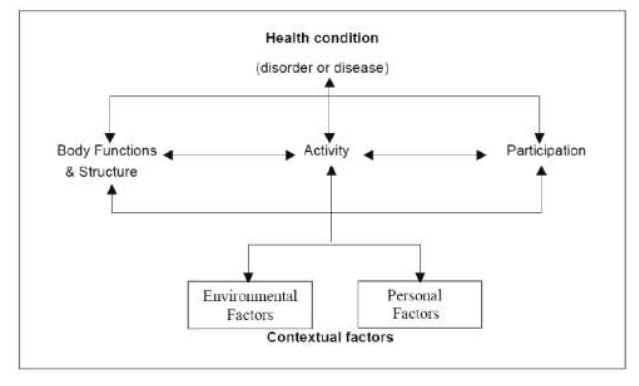









 DownLoad:
DownLoad:
